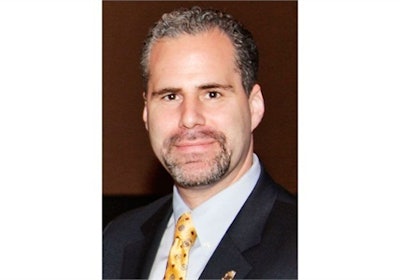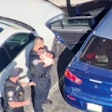
At 30,000 feet, a commercial airliner's seat cushions are not a viable shield or weapon when terrorists attack. Nonetheless, critics of the Federal Air Marshal Service (FAMS) are once again questioning the program's cost-effectiveness. That's right, geniuses like Rep. John Duncan (R-TN) continue to disparage the air marshals as useless because they haven't made an overwhelming number of arrests. Unfortunately, this faulty approach to assessing the true value of a highly trained law enforcement component is contagious.
In September, the Department of Homeland Security Inspector General (IG) made the following statement before the Senate Appropriations Subcommittee: "The program (FAMS) was greatly expanded after 9/11 to guard against a specific type of terrorist incident. In the intervening years, terrorist operations and intentions have evolved. We will be looking at the Federal Air Marshal Program this year to determine whether the significant investment of resources in the program is justified by the risk."
So in effect, the IG is going to waste taxpayer dollars assessing whether an air marshal program is needed. The current director of the air marshals is a former Army Special Forces operator. The Secretary of DHS has an extensive intelligence background and is briefed daily on sensitive information relating to terrorist threats. Yet somehow, their word about the need for air marshals isn't good enough for the IG?
Additionally, the Government Accounting Office (GAO) just completed a 16-month review of the FAMS operations and training. Why would the IG dismiss the value and conclusions of this 16-month review and instead embark on his own costly inquisition of the FAMS? Unfortunately, his statement to the subcommittee only serves to imperil the safety of flying Americans while demeaning the air marshals. The IG seeks to assess how much money and resources should be invested in protecting Americans at 30,000 feet, and the unwavering answer should be every available dollar.
So what does it cost to run the FAMS annually? The current budget is approximately $800 million. Currently, air travelers are assessed a $5.60 security fee for each flight, yet this money does not go to support the FAMS. Perhaps the IG should look into how that money is spent and whether it buys any meaningful protections for Americans engaging in air travel. Nonetheless, if that fee were raised one dollar and allocated for the FAMS, it would pay for the majority of the FAMS' annual operating budget.
The critics assert that advanced screening and reinforced cockpits make the air marshals superfluous. What the critics don't tell you is the shocking percentage of success the covert teams and auditors have sneaking mock weapons and explosive devices through screening checkpoints. The critics also ignore the online video simulation that shows how easy it is for two role players to breach the cockpit and seize control of a plane in less than three seconds. Having armed pilots is an effective security measure, but it doesn't eliminate the need for armed law enforcement professionals to protect Americans in the cabin. I remind the critics that if not for the fee-paying American passengers in the cabin, there would be no flights. They are worth protecting, and Americans are not disposable.
I would respectfully suggest to the IG that this is not a matter for him to assess risk. Instead, he should consider how much a catastrophic attack like 9/11 cost our country in blood, tears, and treasure. We are still recovering from—and brave responders are still suffering and dying from—the effects of that attack.
Any short-sighted compulsion to cut law enforcement budgets will only serve to place Americans in harm's way.
Our elected officials need to wake up and identify areas where they can cut the federal budget without jeopardizing public safety. Americans don't need more widgets and bureaucrats to keep them safe at 30,000 feet. Americans need more air marshals on more planes. When intel fails, and screening fails, and technology fails, the air marshals are the final layer of protection for air traveling Americans. As recently seen with the suspected terrorist bombing of Russia-bound flight 9268, and the unconscionable terrorist attacks in Paris, the bad guys aren't going away. Passengers armed with seat cushions can't defeat terrorists at 30,000 feet, but air marshals can.















